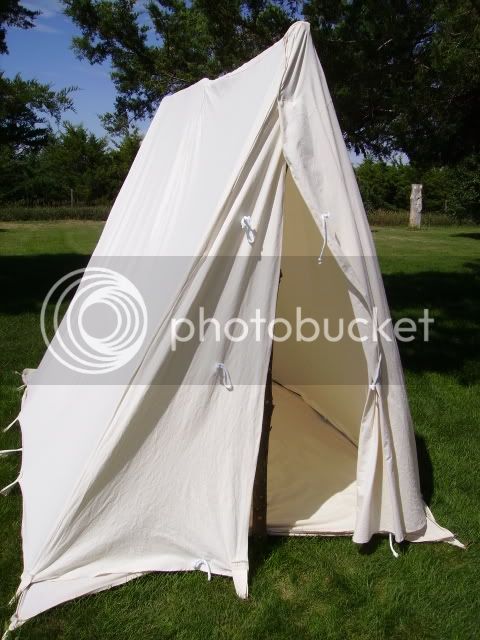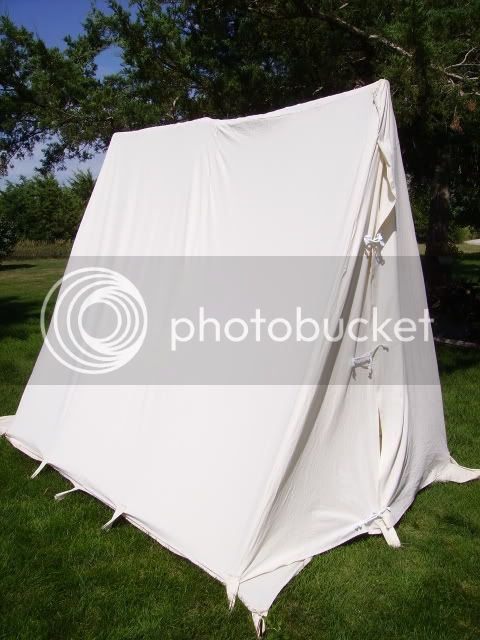crockett said:
... When you say it sheds water well, how well and how hard a rain? I always thought if you touched a canvas tent it would leak at the spot touched but what is shown has interior poles which are touching the canvas so it would seem that would cause a leak.
The kind of tent I am used to doesn't have a ridge pole, just poles front and back but you need guide lines to keep the tent from falling over, the wedge doesn't have these- how does it stay up? I've also thought about a miner's or pyramid type tent- maybe make from a painter's tarp, mainly because there is just one pole. How is the top of the pole formed to prevent it from poking through the top of the tent? ...
To try to answer several of your questions.
Tents made from painters tarps will shed the bulk of the rain water if they are erected with the canvas tight. However, each time a rain drop hits the canvas it tends to drive some of the water through creating a misting effect on the inside.
Waterproofing helps. Several here have mentioned Thompsons but the last can of that I looked at said not for use on fabric as it will break it down. That may have changed recently I don't know.
As a aside, I have journal kept during the Napoleonic War that mentions the first issue of locally produced tents made in Portugal. The comment was to the effect that it was better at keeping the water in the tent than out.
As for touching canvas and creating a leak, my experience is that if the surface tension of the water that soaks through canvas is left alone it will not tend to leak but if you break that surface tension it will start to leak and continue. I was also told a child that touch the canvas leave oil from your skin that aides in the leaking process. Can't say if this is really true give the amount of oil typically on a person's skin.
As for tent poles touching the canvas they don't tend to create leaks because they disturb the interior moisture surface tension unless moved about.
As for how a Wedge Tent stays up without guide lines, they are constructed using a ridge pole connected to the uprights. The sides are then staked down tight on each side which results in effectively a triangle from the top of the rear pole to the front stake to the top of the front pole and back to the top of the rear pole. This is combined with a second triangle formed from the same components but starting at the top of the front pole and proceeding to the back. This is reenforced by the same structure on the opposite side.
As for upright poles on miner's or pyramid tents they typically include a pin of the top that protrudes through a hole or grommet at the apex of the tent. The same is true for some wedges, marquees, walls, and flies. Frequently they are left exposed but in very heavy or constant rain they can result in rain running down the pin through the hole or grommet and down the pole. Historically this was prevented by the placement of a Finial on top of the pole pin which directed the rain away from the hole or grommet through which the pin protrudes. They weren't just for decoration.
Finally, some tents are designed with heavy reinforcement at the location where upright poles end creating a pocket for the pole so it does not require a pin that would protrude through the canvas. However these can be hard to erect since the pole will frequently not want to stay in the pocket during setup. some are also designed so that the ridge protrudes through the ends of the tent and the uprights are placed outside the tent.
Hope this is useful to you.
OH, BTW, I sewed up my own wedge from a painters tarps a few years a go and it worked quite well even without extra waterproofing (except for the misting during rains). It also did not have a ridge pole so guide lines were necessary.






